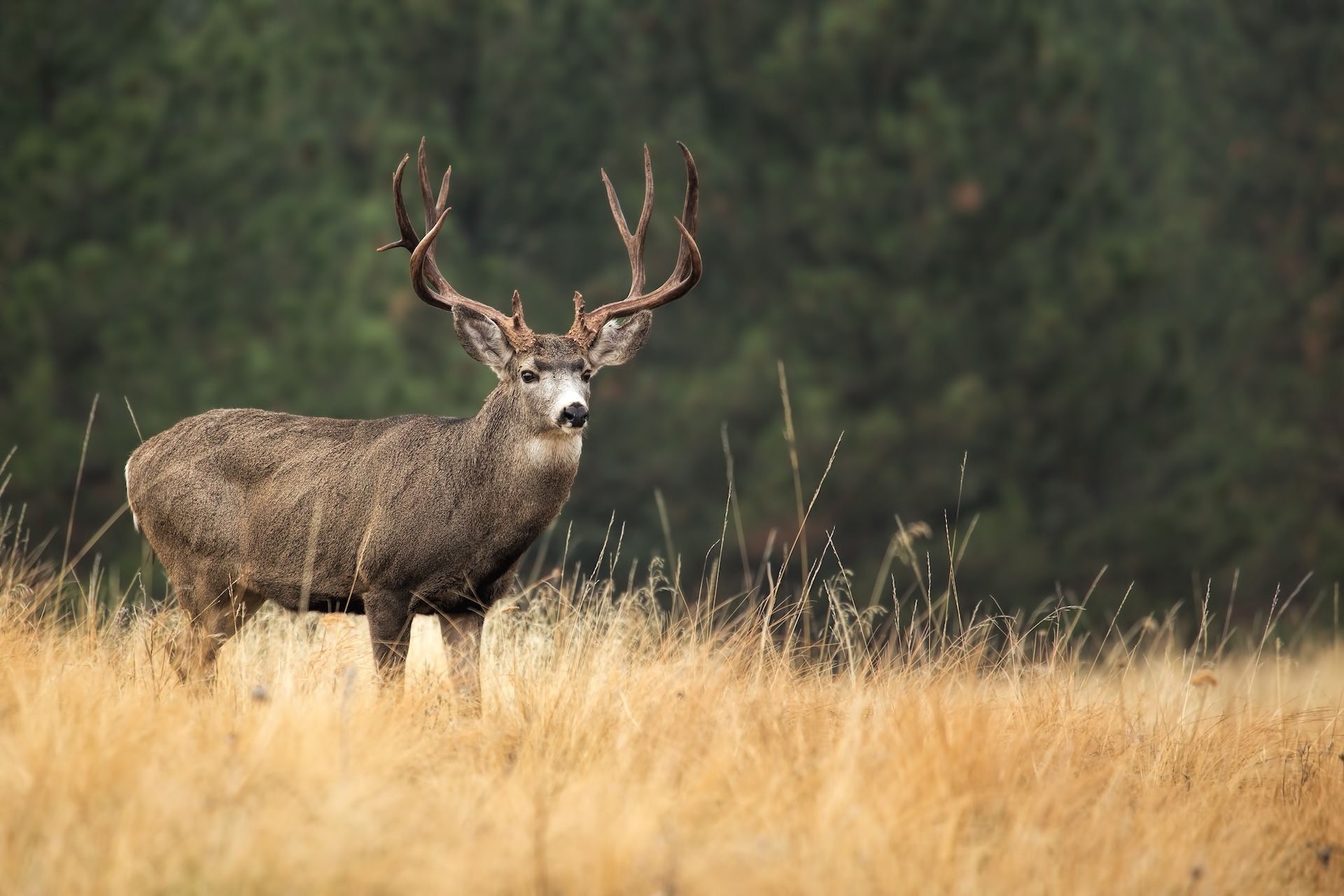Field Guide / Deer
The Best States to Hunt Mule Deer
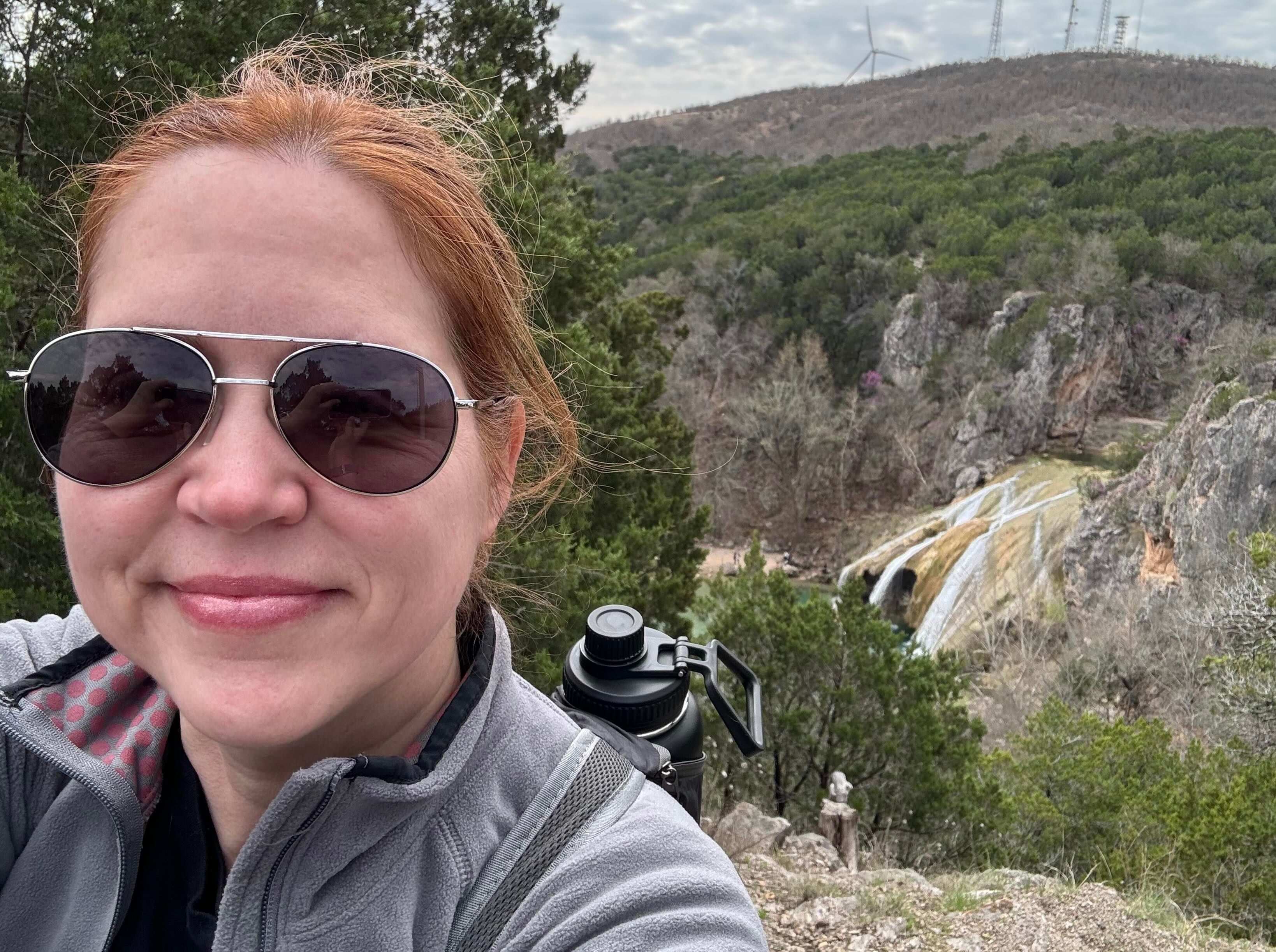
8 Minute Read
Muleys are a mainstay of the North American hunting list and a symbol of a classic Western hunt. As you plan your hunts this season, you need to know the best states to hit up for a mule deer hunt.
Notoriously agile and extremely elusive, they weave in and out of rugged terrain and high altitudes with a stunning ease. They have a heightened sixth sense for hunting presence, and bagging an aged buck is no small feat.
Today, we're breaking down the best states to hunt mule deer (not to be confused with the very similar whitetails), as well as public land opportunities and critical factors to consider when choosing a state.
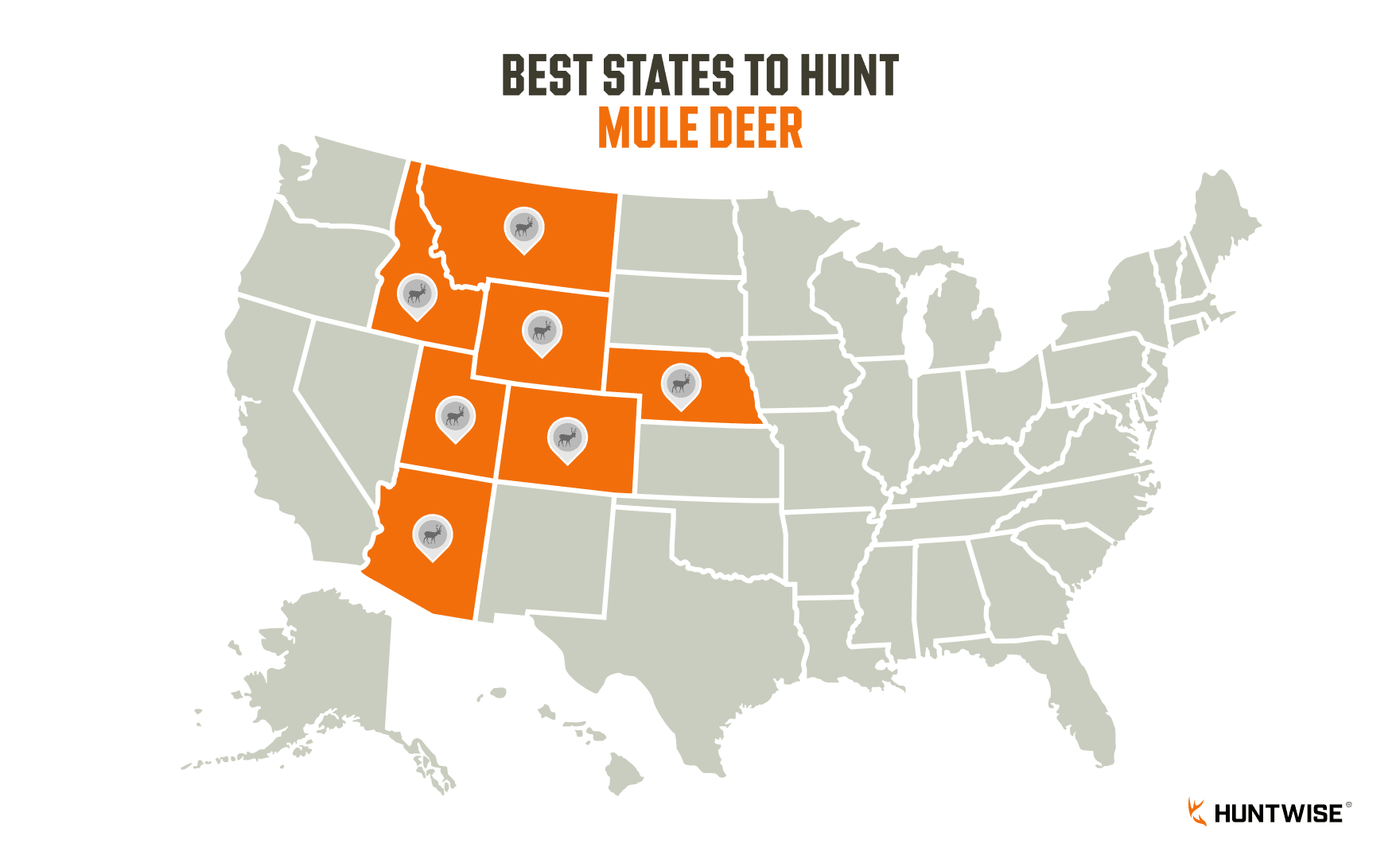
What are the Best States to Hunt Mule Deer?
Mule deer hunts are made for the true DIY hunter. The sweeping prairies and sage flats call for nothing short of elite preparation, and even in some cases, peak physical conditioning.
As a species, mule deer are fairly adaptable across a range of terrain, meaning they can be found in a vast expanse across the West. That being said, not all opportunities are equal in terms of hunting potential, numbers, and trophy hunts.
So, what are the best states for a mule deer hunt? Here are seven of the best.
1. Colorado
First on the list is the centennial state, and for good reason.
Colorado boasts the largest mule deer population in North America (and the world). On top of that, it's got trophy potential with bucks over 180"+ common.
What makes Colorado such an elite mule deer destination is the diversity of habitat from the high Rocky Mountains to the lower plains. This variety provides deer with a mixed environment and elevation to thrive.
Additionally, you have the Colorado Parks and Wildlife, whose management practices are next-level. While tags are available through a draw-only system, there are units with easy-to-draw tags offering a range of hunt types, including archery, muzzleloader, and rifle.
2. Utah
When looking at B & C (Boone and Crockett Club), Utah often follows Colorado in terms of record typical mule deer, and is best known for producing record-book mule deer. The mule deer population tends to fluctuate, and while the 2024 post-season estimate stands at 295,200, the Utah Division of Wildlife Resources has its sights set on boosting these numbers.
Hunting locations are varied, ranging from the high desert to the alpine, offering diverse hunting styles. While there's a good mix of general-season and limited-entry opportunities, tag distribution can be limited.
3. Idaho
Idaho is one of the top mule deer hunting states for entry into the sport.
With millions of acres of public land and access to National Forests and BLM, a decent deer population of around 230,000, and general season tag availability (OTC), access can be quick, although not guaranteed.
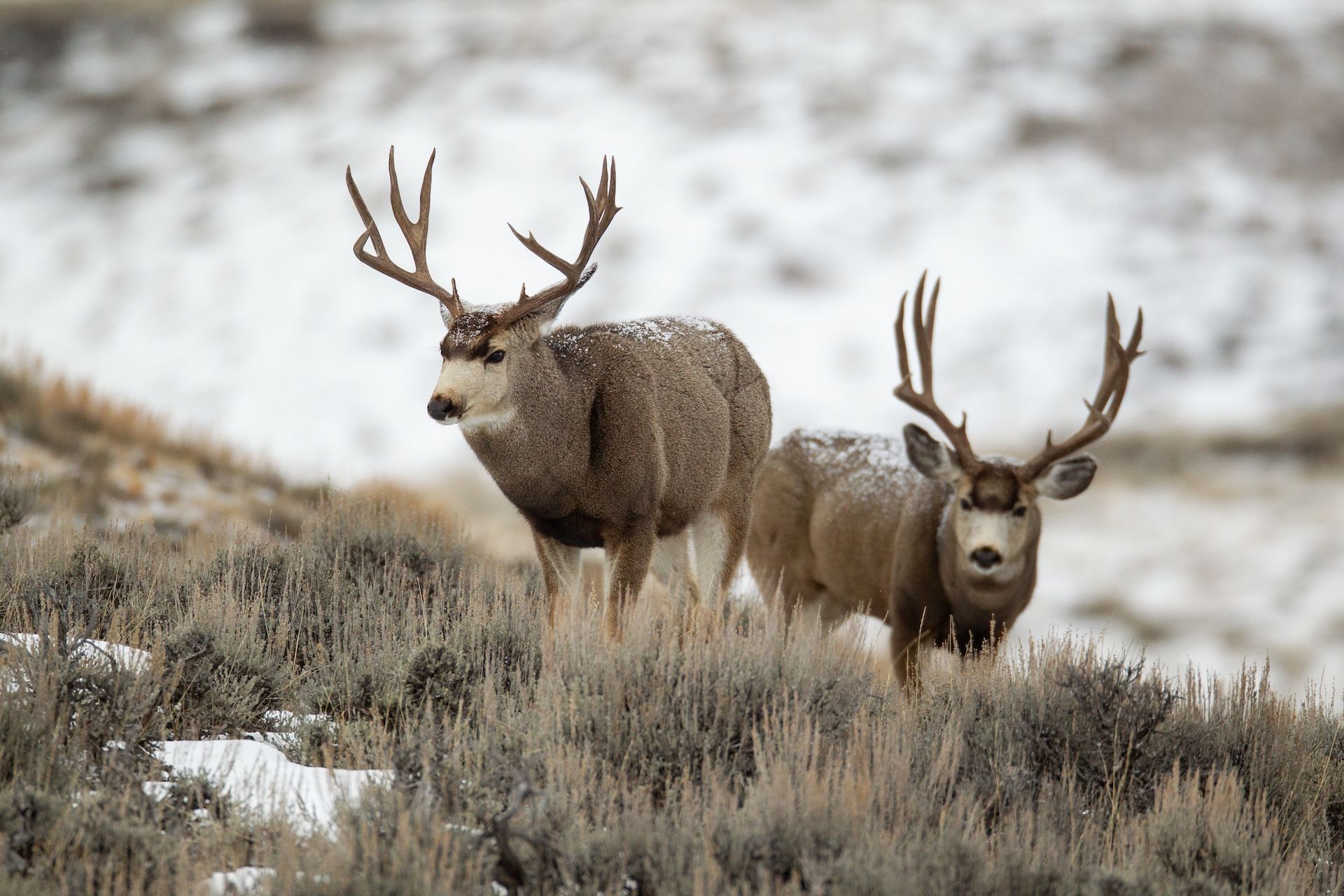
4. Wyoming
Wyoming can deliver trophy deer. While numbers may be down due to some rough winters and environmental impact, it still delivers on public land opportunities with large amounts of BLM and National Forest land open to hunting.
If you're an out-of-stater, their non-resident opportunities are strong with good draw odds compared to other top locations. Through concerted efforts by the Wyoming Game and Fish Department and large-scale conservation projects, we hope this elite mule deer location can support a larger population, similar to the past.
Walk-in hunting areas are popular, and in-depth scouting will be necessary to take a buck in this state. Make sure you have your HuntWise app and start scouting early!
5. Montana
Taking a mule deer on Montana public land is no easy feat — but that's what makes it such an exhilarating pursuit and one of the best states to hunt mule deer.
There's a wide distribution of mule deer across the state. However, hunters typically favor the eastern side due to its mix of private land and accessible hunting grounds under Block Management. Public hunting is varied and extensive, with seven different regions and 122 districts.
The seasons are long, with flexible weapon choice, meaning more opportunities to hunt muleys. Due to the Federal and National Forests and long seasons, Montana is one of the best mule deer states for public land hunts.
6. Arizona
Arizona is home to both the unique desert mule deer and the Coues, which are widely distributed across the sparse deserts and elevated forested mountains (including the Arizona strip hunting units 13A and 13B), and is renowned for producing trophy bucks. The opportunity is there if you're willing to wait in the draw system.
While tag distribution may be limited compared to neighboring states, non-permit OTC archery opportunities in some units make it an excellent option for out-of-state archery hunters looking for a unique hunt.
7. Nebraska
Rounding off the list is the Cornhusker State. Although numbers are on a downward trend, like many other states, there is still a good mix of whitetail and mule deer opportunities with over 1.2 million acres of publicly accessible lands, including state, federal, and conservation partner lands.
The mixed environments, including the rolling plains and river breaks of the central and western grasslands and river systems, such as the Platte and Niobrara Rivers, create unique hunting opportunities. Tags are affordable compared to other states, and if you enjoy your time in Nebraska's hunting environments, then consider applying for a big game draw.
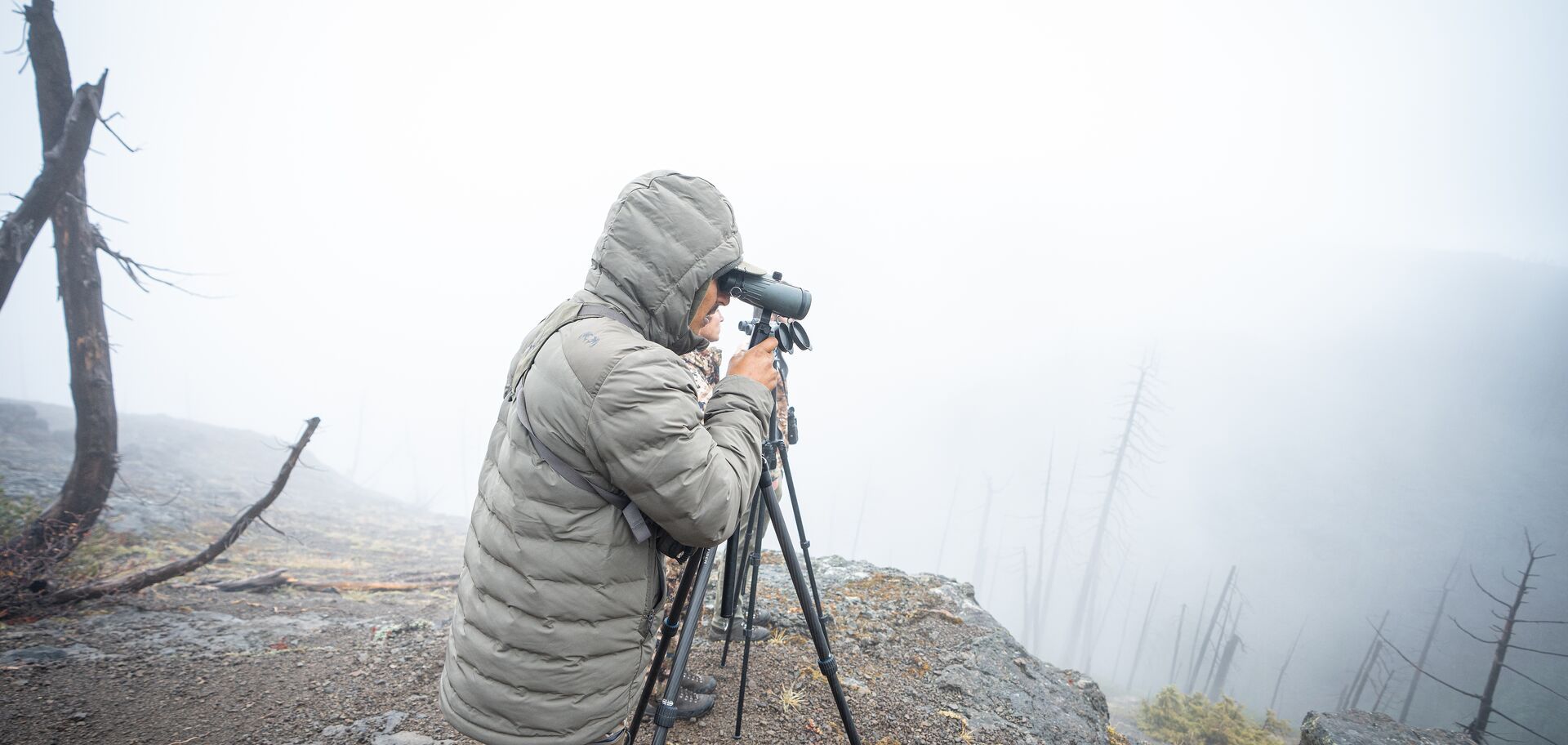
Which States Offer Over-The-Counter Mule Deer Tags?
There are several OTC hunting opportunities across the North American mule zones.
- Colorado offers OTC for some archery and rifle seasons with limited areas.
- Heading North-West, you've got Idaho general season tags. However, these are popular and sell quickly during mule deer season.
- Utah offers general OTC permits, while Wyoming has limited OTC opportunities, primarily for residents.
Finally, Arizona has some great OTC archery season opportunities.
What are the Most Affordable Top Mule Deer Hunting States?
Historically, Wyoming is among the best in terms of value for residents and relatively affordable for non-residents at $374 for a non-resident license. Idaho is also a great option, with non-resident tags available at a price comparable to Wyoming (excluding the non-resident hunting license fee of $185).
For archery, Colorado offers very reasonable hunting opportunities for an OTC hunt, and Nebraska provides affordable permits to both whitetail and mule deer opportunities.
However, to determine the most affordable hunting state for you, it's best to do a full costing forecast, including gas, accommodation, food, and other licensing and fees, as this will give a better overall picture of a hunt.
Where Can You Hunt Mule Deer on Public Land?
Public mule deer hunts are plentiful, with different state and federal agencies providing hunting opportunities in specially maintained zones. Some opportunities include Bureau of Land Management (BLM) opportunities in the West (Nevada, Utah, Wyoming), National Forest lands in Colorado, Montana, Idaho, and Wyoming State Trust lands in certain states. You'll also find walk-in-access programs in Wyoming, Montana, and Nebraska, which function as national programs.
To uncover more public land opportunities, download the HuntWise app and apply the Public Land map layer to scout hunting areas in top states and explore public opportunities you might not have known about. Early e-scouting is essential for identifying high-potential zones and exploring previously unknown landscapes as a non-resident hunter.
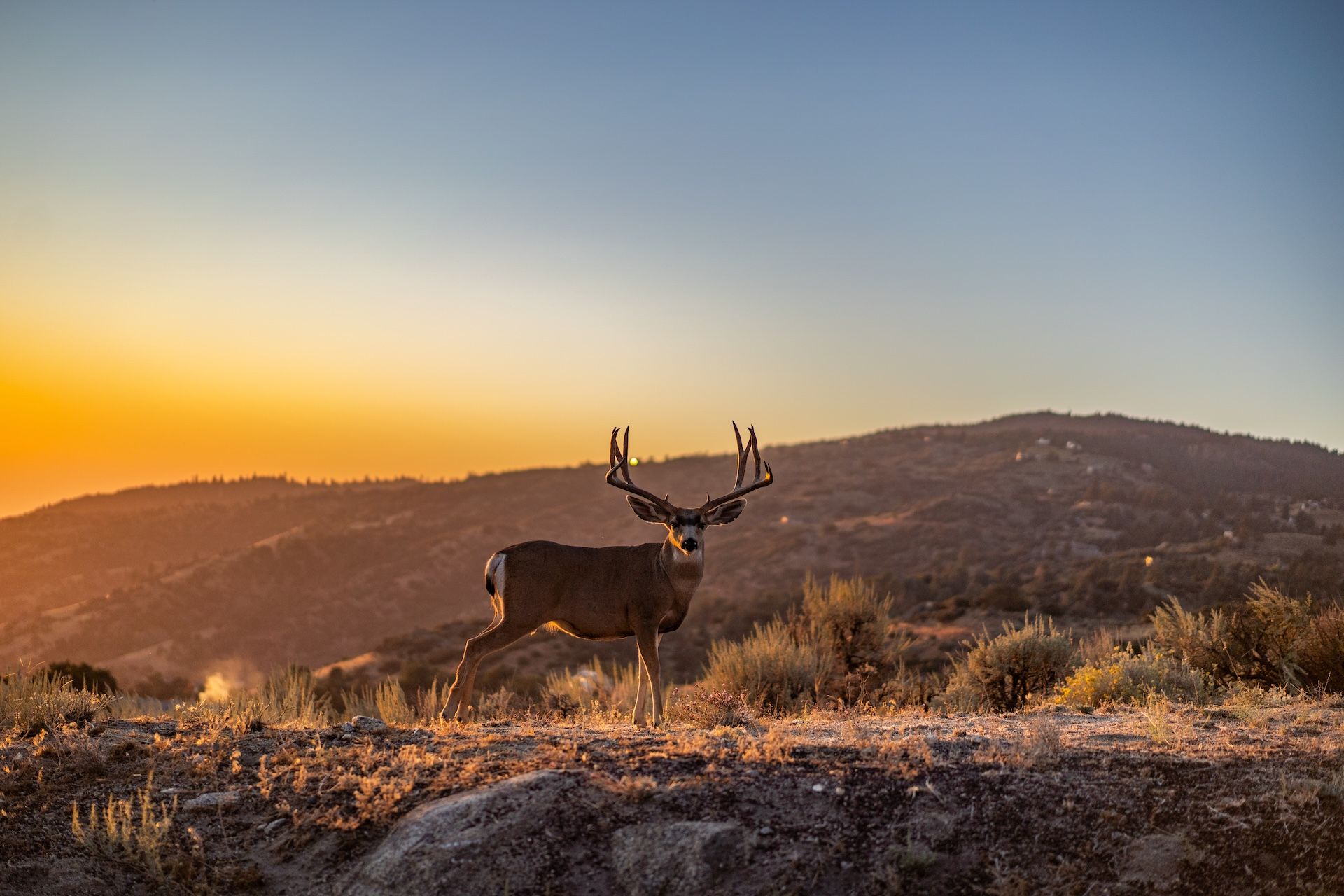
Factors to Consider When Choosing a State
Choosing the right mule deer hunting state requires careful consideration of several factors.
For many, the allure of a trophy hunt will send them to states with historically strong genetics, such as Colorado, which is known for producing larger, older bucks, or Idaho, where a quarter of the top 20 record typicals were taken.
Hunting opportunities must also be carefully balanced when choosing a state. Tag availability is not the same across the board, and rifle, archery, and muzzleloader opportunities will differ in length and availability, such as over-the-counter vs. draw.
Cost is an essential factor. If you're lucky enough to be a resident in a mule deer stronghold, then you're in luck. For non-residents, costs can be high, as some states have higher tag fees or more competitive draws than others.
Consider also whether you plan to hunt during the rifle season or a different allocation, such as archery, as states will offer different hunting windows depending on the firearm choice.
Make Sure You Can Do It
While mule deer are well-dispersed in many top states, quality hunting often involves hiking in mountain and high-elevation alpine zones, so it's essential to also factor in accessibility and physical fitness.
Ultimately, experience level is a crucial factor. Some states are better suited for beginner hunters or first-time mule deer hunters, such as Idaho, which has substantial mule deer numbers, tag opportunities, and a variety of hunting terrains.

Plan the Ultimate Mule Deer Adventure With HuntWise
Are you ready to start planning your next mule deer hunt? In terms of a Western hunting experience, it's hard to beat. You'll work hard for it, but a mule deer hunt is one of the most rewarding experiences in the North American hunting roster.
We can't tell you which of the best states to hunt mule deer is best for you, but make sure you choose wisely as you plan your hunt. After carefully considering your personal hunting requirements, time, and tag options, start e-scouting on HuntWise public land and private land features to kickstart your hunting plans.
Don't have HuntWise yet? Don't start planning without it! Download it and get your first week in the app for free.
Frequently Asked Questions (FAQs)
We have answers to your questions about the best states for mule deer hunts!
Q: What state has the biggest mule deer?
A: Colorado is known for producing some of the largest mule deer, with a long history of record-book bucks.
Q: Which states offer over-the-counter mule deer tags?
A: States like Idaho, Utah, and Colorado offer certain over-the-counter mule deer tags. However, availability and units vary by year.
Q: What is the most affordable state for mule deer hunting?
A: Wyoming and Idaho are often considered among the most affordable options, especially for non-residents.
Q: Where can you hunt mule deer on public land?
A: Public land mule deer hunting is available in most Western states, including Colorado, Wyoming, Montana, Idaho, and Utah.
More Content Like This
When to Start Scouting For Whitetail Deer
When should you start scouting for whitetails? Is it too early to start in the spring? Is the fall too late to get ahead of other hunters? Read More
Read More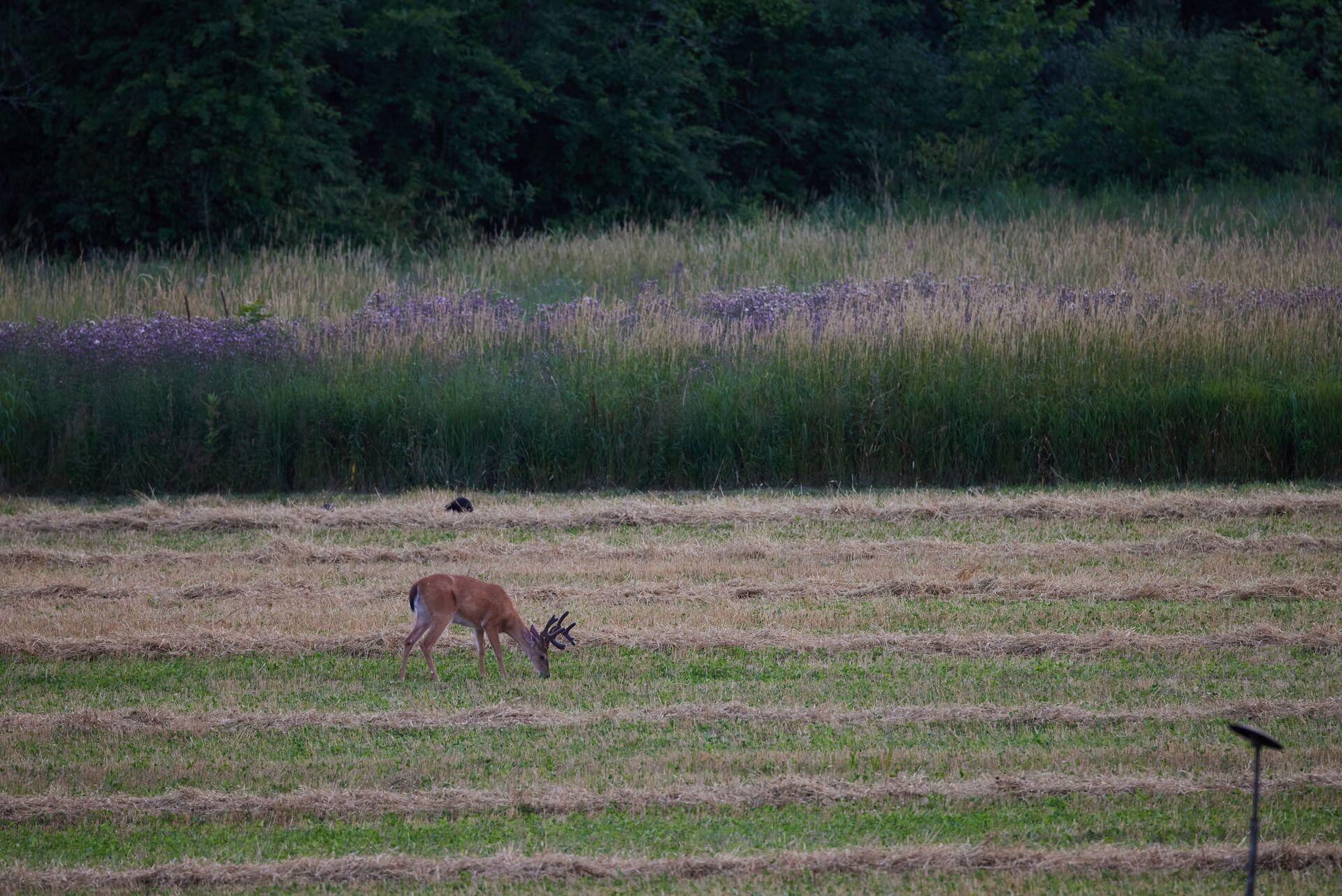
Understanding Deer Feeding Times for Bagging Big Bucks
When it comes to deer hunting, timing is everything. Read More
Read More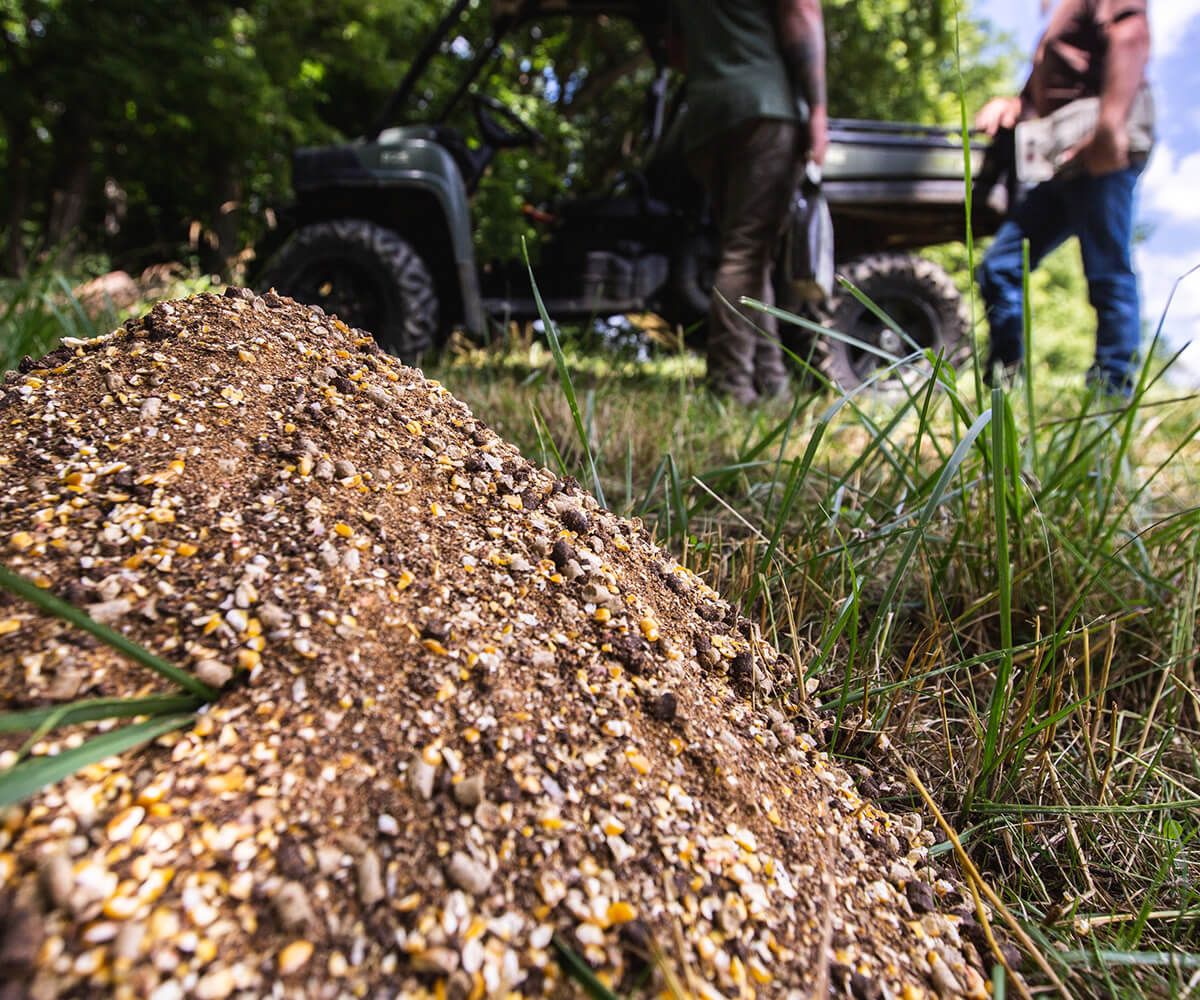
What is the Best Thing to Put in a Deer Feeder?
Whether you're an experienced hunter looking to help condition deer over the harsh winter period with a brand new feeder or a nature lover who enjoys watching these stunning creatures from the comfort of your home, knowing what to load into your deer...Read More
Read More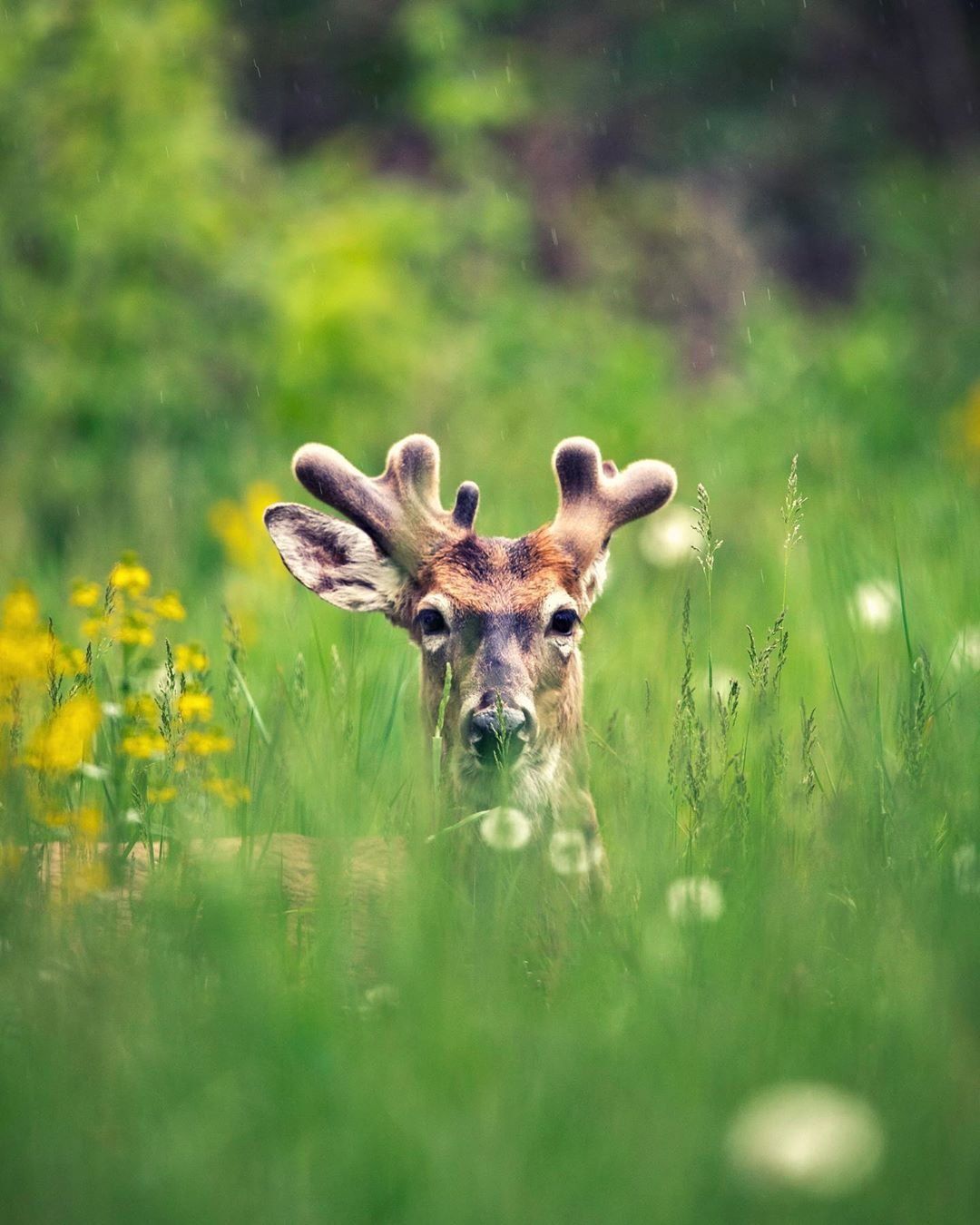 Deer
DeerWhen to Start Scouting For Whitetail Deer
By Melisa Geleott | 05/01/2023When should you start scouting for whitetails? Is it too early to start in the spring? Is the fall too late to get ahead of other hunters? Read More
Read More Deer
DeerUnderstanding Deer Feeding Times for Bagging Big Bucks
By Teri Williams | 07/16/2024When it comes to deer hunting, timing is everything. Read More
Read More Deer
DeerWhat is the Best Thing to Put in a Deer Feeder?
By Melisa Geleott | 08/19/2025Whether you're an experienced hunter looking to help condition deer over the harsh winter period with a brand new feeder or a nature lover who enjoys watching these stunning creatures from the comfort of your home, knowing what to load into your deer...Read More
Read More
1 of 3
